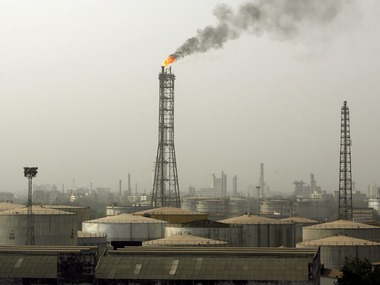Losses for oil marketing companies from regulated fuel could touch an all-time high of Rs 1.4 lakh crore this year. According to Crisil Research, a weak rupee and high crude prices could push the losses or “under recoveries” to this record level.
The losses are almost about to double from Rs 78,000 crore last financial year despite rise in prices in June. And the two major reasons have been the dollar gaining against the rupee and the crude prices hovering above the 100 dollar per barrel mark.
[caption id=“attachment_180286” align=“alignleft” width=“380” caption=“Losses for oil marketing companies from regulated fuel could touch an all-time high. Reuters”]  [/caption]
In fact, brent crude oil prices have been around 113 dollar per barrel on an average between April and December in 2011. This is around 40 percent higher when compared to last year. The oil prices have been high due to disruption in supply from Middle East and North Africa. If one looks at 2012, situation might not be any different. Oil prices have remained sticky. And Deutsche Bank predicts that oil prices could remain around 115 dollar per barrel this year. So no respite for the oil companies on that front.
 To add to the misery, a sharp depreciation of the Indian rupee, by almost 20 percent vis–vis the USD since August 2011, exacerbated the effect of the increased oil prices on under-recoveries, says Crisil.
Though Crisil expects losses to go down to Rs 60,000-70,000 crore in 2012 on back of lower crude cost of around 100 dollar and a stronger rupee, one cannot be sure. Morgan Stanley has predicted that rupee could go down to 54.3 per dollar and even could touch a low of 54.8 this year. Given the uncertainties in Iran and plausible disruption in supply could be a matter of serious concern, especially for Asian countries.
In this context it is too premature to say losses would come down next year. The point is this will harm profitability of companies like IOC, HPCL and BPCL.Though the losses are shared by the government and upstream and oil marketing companies, there is no fixed percentage. This uncertainty adds to the trouble for the OMCs.
Impact Shorts
More ShortsThe failure of the government to pay its share also harms the OMCs. Crisil explains the liquidity of OMCs come under pressure when the government does not dole out its share on time. The debt to equity ratio of the companies, which indicates the liquidity condition of a company rose to a staggering 2.2 times at the end of September 2011 from 1.2 times in March. Although the government had committed to release Rs 30,oo0 crore during the first half of the year, it had released only Rs 8000 crore till December 2011.
The OMCs, therefore, had to resort to higher short-term borrowings to meet their working capital requirements. Crisil estimates, even if the government additionally releases Rs 35000-40000 crore to the OMCs over the next three months, the debt equity ratio of the OMCs will still be high at close to 2 times by the end of March 2012. Hence, timely support from the government will be critical for the OMCs to manage their liquidity.


)

)
)
)
)
)
)
)
)



